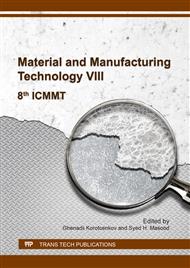p.238
p.245
p.252
p.257
p.267
p.272
p.278
p.283
p.287
Permeability and Porosity of Pervious Concrete Containing Blast Furnace Slag as a Part of Binder Materials and Aggregate
Abstract:
The use of industrial by-products could provide a feasible solutions for the construction industry to reduce the strain on supply of natural aggregate as well as achieving the concept of environmentally friendly binder material by replacing part of Portland cement. This paper reports the results of an experimental study, mainly on the permeability and porosity characteristic of pervious concrete developed by substituting 26% Portland cement with air-cooled blast furnace slag and replacing part of natural coarse aggregate with granular blast furnace slag of different aggregate size and different water/cement ratio. The pervious concrete with lower water cement ratio and 25% GBFS affected either the porosity or the compressive strength of the pervious concrete. As expected, the porosity increased in pervious concrete with bigger aggregate size, but decreased when the smaller aggregate size was used. Partial substitution of coarse aggregate with granular GBFS of the same gradation size did not affect the permeability coefficient. Specimens developed using water cement ratio of 0.34 and coarser aggregate size tend to have a greater water permebility compared with those of 0.3 water/cement ratio.
Info:
Periodical:
Pages:
272-277
Citation:
Online since:
October 2017
Authors:
Keywords:
Price:
Сopyright:
© 2017 Trans Tech Publications Ltd. All Rights Reserved
Share:
Citation:


